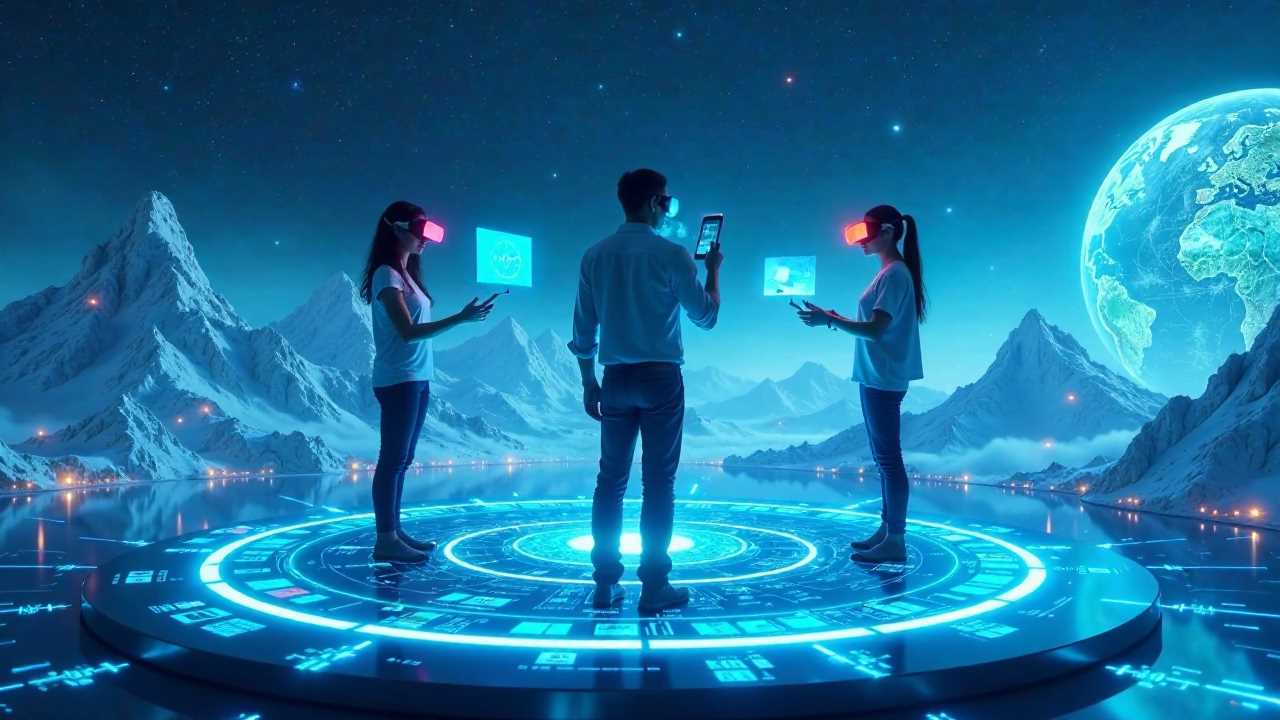
Introduction to Virtual Art Creation Tools
In today's rapidly advancing technological landscape, Virtual Art Creation Tools have emerged as a game-changer for artists and creators alike. These tools are not just enhancing the way we create art; they are transforming the entire artistic process. By integrating VR Headsets, Augmented Reality, and Haptic Feedback, artists can now immerse themselves in their creative endeavors like never before. This article explores how these technologies work together to create a revolutionary experience in the world of art.
The Power of VR Headsets in Art Creation
VR Headsets are at the forefront of the virtual art revolution. They provide an immersive experience that allows artists to step into a digital environment where they can create and manipulate their artwork in three dimensions. Unlike traditional methods, where artists are confined to a flat canvas, VR technology opens up a world of possibilities.
With VR, artists can visualize their creations from every angle, making adjustments and enhancements in real-time. This immersive environment fosters a deeper connection between the artist and their work, allowing for a more intuitive creative process. The ability to walk around and interact with their art in a virtual space can lead to unexpected inspirations and innovative designs that would be difficult to achieve on a traditional canvas.
Augmented Reality: Bridging the Gap Between Digital and Physical
Augmented Reality (AR) complements VR by overlaying digital elements onto the physical world. This technology allows artists to see how their creations will look in real life before they are physically made. For example, an artist can use AR to project their digital artwork onto a wall or a public space, providing a preview of how it interacts with its surroundings.
This capability not only enhances the creative process but also allows for greater collaboration. Artists can share their visions with clients or collaborators in a more tangible way, making it easier to communicate ideas and concepts. The integration of AR into the artistic workflow encourages experimentation and innovation, as artists can visualize the impact of their work in various environments.
Haptic Feedback: Adding a New Dimension to Creativity
One of the most exciting advancements in virtual art creation is the use of Haptic Feedback. This technology provides tactile sensations that simulate the feel of traditional art materials. When an artist uses a digital brush in a VR environment, haptic feedback can replicate the resistance and texture of real paint on canvas.
This sensory experience is crucial for artists who rely on touch to guide their creative process. By incorporating haptic feedback, artists can achieve a more authentic and satisfying experience, bridging the gap between digital and physical art forms. This technology allows for greater precision and control, enabling artists to create intricate details that enhance the overall quality of their work.
Digital Canvas: The Future of Artistic Expression
The Digital Canvas is a vital component of virtual art creation tools. Unlike traditional canvases, digital canvases offer endless possibilities for customization and experimentation. Artists can easily change colors, textures, and shapes without the constraints of physical materials.
Moreover, digital canvases allow for the integration of various media, including photography, video, and sound. This versatility enables artists to push the boundaries of their creativity, creating multi-dimensional works that engage viewers on multiple levels. The ability to save and edit digital artwork also means that artists can revisit and refine their creations over time, leading to a more polished final product.
3D Modeling: Bringing Ideas to Life
3D Modeling is another essential aspect of virtual art creation tools. This technology allows artists to create three-dimensional representations of their ideas, which can be manipulated and adjusted in real-time. Whether designing characters for animation, creating sculptures, or developing architectural models, 3D modeling provides artists with the tools they need to bring their visions to life.
The integration of 3D modeling with VR and AR technologies enhances the creative process by allowing artists to visualize their work in a fully immersive environment. This capability not only aids in the design process but also facilitates collaboration with other creators and clients, as everyone can experience the artwork in a shared virtual space.
The Future of Art Creation with Virtual Tools
As technology continues to evolve, the potential for Virtual Art Creation Tools will only expand. Artists will have access to increasingly sophisticated tools that enhance their creativity and streamline their workflows. The combination of VR, AR, haptic feedback, digital canvases, and 3D modeling is paving the way for a new era of artistic expression.
We envision a future where artists can seamlessly transition between digital and physical mediums, creating works that are not only visually stunning but also interactive and engaging. The possibilities are limitless, and the only constraint will be the artist's imagination.
The integration of Virtual Art Creation Tools into the artistic process is transforming the way we create and experience art. With the power of VR Headsets, Augmented Reality, Haptic Feedback, Digital Canvas, Immersive Environments, and 3D Modeling, artists are empowered to explore new dimensions of creativity. As we continue to embrace these technologies, we can look forward to a future where art is more accessible, collaborative, and innovative than ever before.
 GadgetsProduct ReviewsSmart DevicesDronesVirtual DevicesPrivacy PolicyTerms And Conditions
GadgetsProduct ReviewsSmart DevicesDronesVirtual DevicesPrivacy PolicyTerms And Conditions
